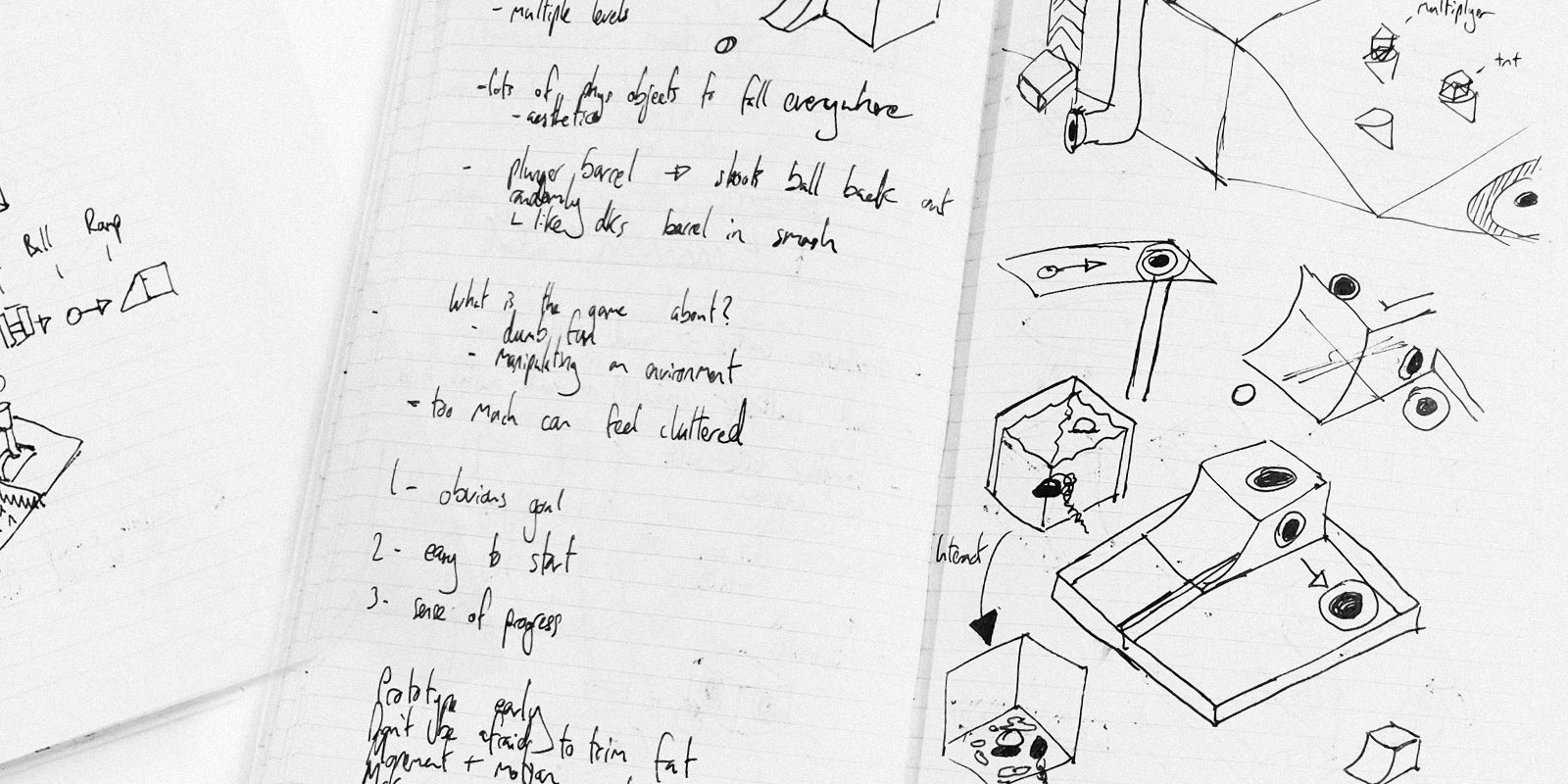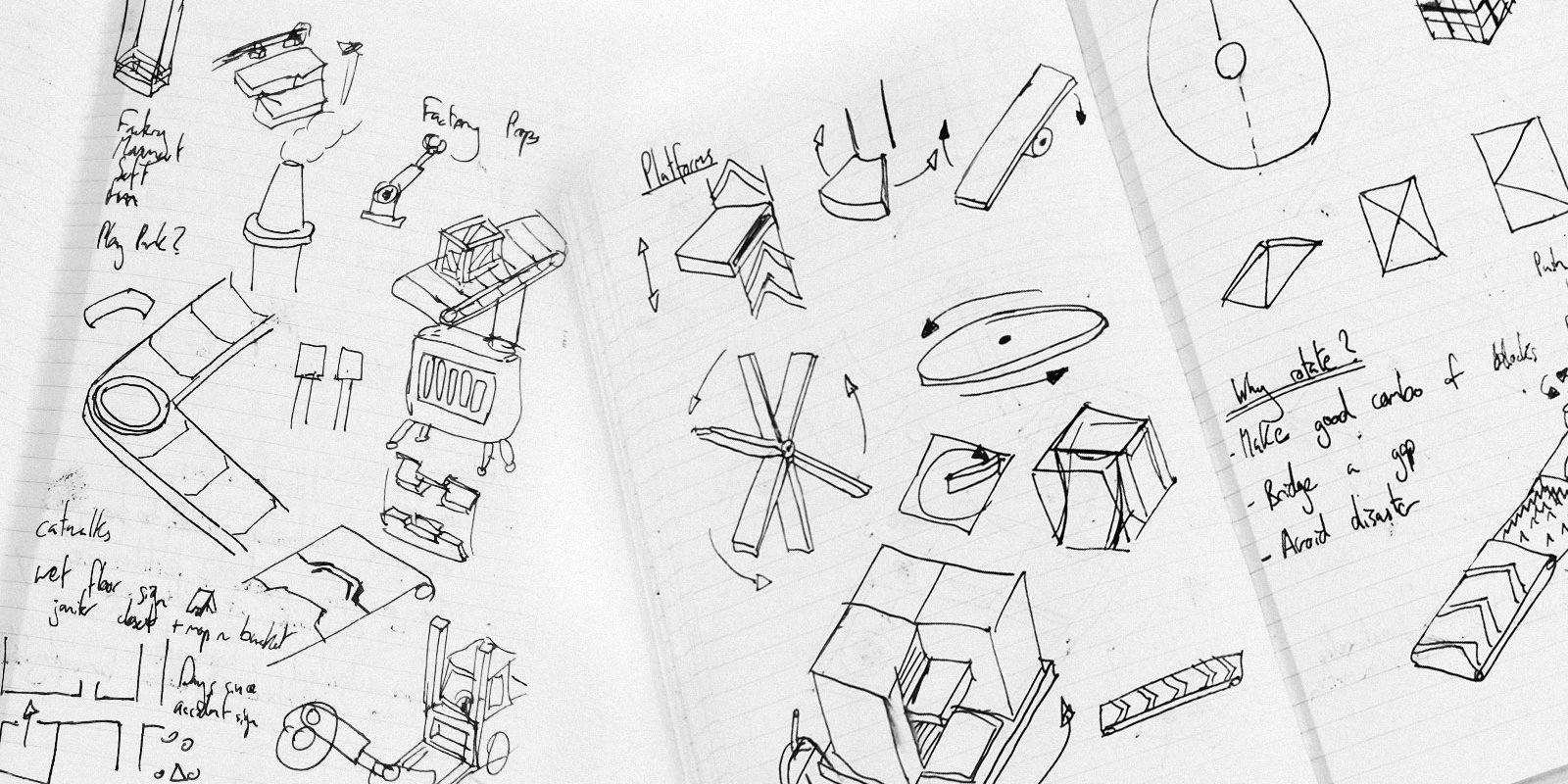The Summer 2019 Labs Project from the Co-Pop team saw Alan, Kirsty and Ryan come up with the highly addictive game ‘Balls to it.’ As always time was an enemy and they had just a fortnight to invent, design and build before presenting to the team.
Knowing the previous Labs Project had been a game our competitive hackles were raised. With the prospect of bettering our colleagues and at the same time wanting to stand out by using a different platform to them, we opted to make an app instead of a PC game as they’d done. The obvious bonus to us was that it would give us a programming challenge at the same time as being fun.
Pablo Picasso once said, ‘Good artists copy; great artists steal’ so we grabbed our Sharpies and started trawling through the games we loved: Monument Valley, Alphaput, Hitman Go, to name a few.
We drilled down into what exactly we loved about them, what stood out and which features we wanted to incorporate in our own game. We wanted clean backgrounds, simple input controls and a stylised artwork.

Planning wall
Keep it simple
It was decided, we were going to design a game where the player guided a ball through and around a series of obstacles with a goal of getting it in a hole. We wanted levels which increased in difficulty, picturesque environments with simple colours, and uncomplicated player input.
Next steps
Kirsty kicked off work on the main game mechanic logic looking at how the player interacted with the ball. She wanted to make sure the game had a nice feel, included controls for aiming the ball, limiting the amount of force that could be applied to it, and calculating that force and direction and moving the ball.
Alan began by investigating ways the ball could be influenced by the environment for example ramps to slow or speed up the ball, fans to blow it off course, and moving walls to push it into lava pits.
Next up we planned the basic level layouts, which needed to be varied and have different difficulties, before blocking out the geometry for elements which affected the ball’s physics. We then created the logic for each puzzle element as reusable components so they could be dropped into other models on different levels.
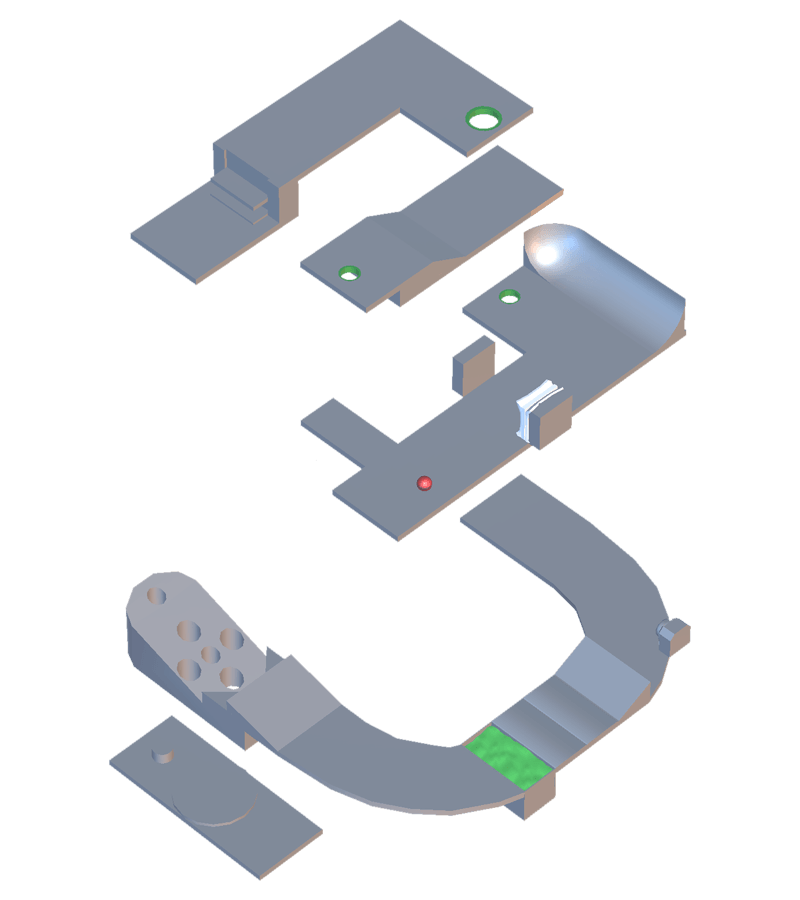
Basic block level
Once we had a fully blocked out level, with a well-interacting ball, we brought Ryan, our 3D animator in. He and Alan started working on the art passes and began turning it from a sandbox test style into an actual environment while Kirsty focused on testing the physics and mechanics, bringing together the logic and the assets.
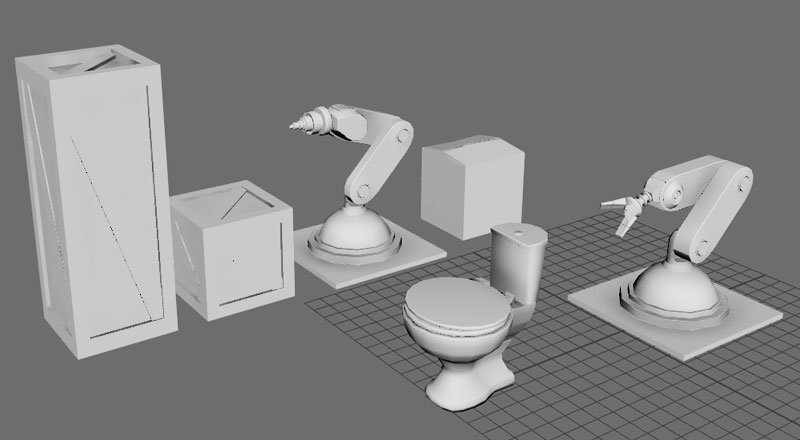
Basic props
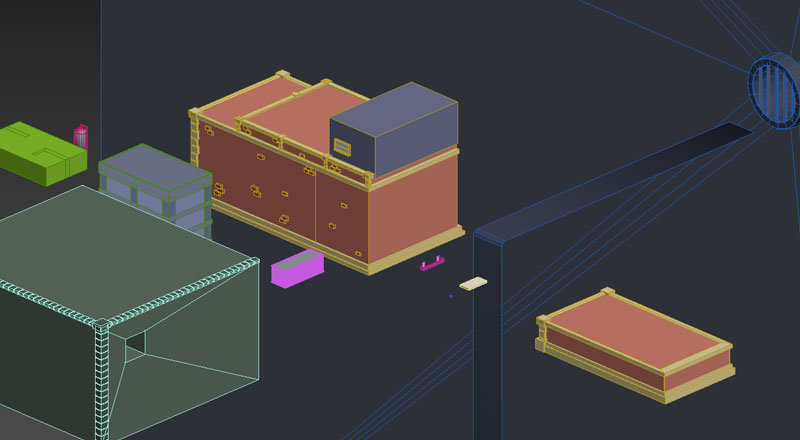
Initial art style
Art Work
We started with a simple whitebox which had very basic level and game mechanics – but that wouldn’t do at all! This multi-tiered game environment needed to be fleshed out and embedded in a world space worthy of a Co-Pop project, but also one that would not limit us to one set of game mechanics.
After a bit of research, we chose a wacky, some might say whimsical, factory theme which opened up lots of possibilities for different mechanics, then to suit the environment Alan settled on bright saturated colours using reds, yellows and blues.
Programming Challenges
Okay so it sounds like plain sailing doesn’t it? Well that’s because we’re pros and we know how to make the complicated look simple but let me tell you, it’s not as straightforward as it seems!
The biggest challenge for Kirsty was getting the logic right for the ball movement. She began by getting the ball to move based on distance and direction dragged then applied force to it before adding physics materials onto the floor and invisible bounds of the game. This would then simulate realistic physics and bounce back off the surfaces hit.
Next was logic to calculate how much force to apply to the ball depending on how far back the user had dragged. This involved lots of laborious trial and error testing to perfect it.
“A lot of time was dedicated to working with nothing in the scene but a ball and a flat surface, as this was the main game mechanic. If this didn’t feel as good as envisioned it would have impacted the whole game and user experience”
Once everything had a nice game feel to it and worked as expected, it was time to add some obstacles in and see how the physics worked. It needed to react well with the ball and/or each other and we needed to make sure things didn’t fly off unexpectedly. A bit of testing and tweaking and we managed to tame the physics – Albert Einstein eat your heart out!
Some obstacles, for example the conveyor belts, had their own logic attached to them which slowed down the ball and affected its applied force. Where this was the case they needed additional attention to balance the difficulty level.
Ramps were a particular pain in the posterior as when the incline was not quite right the ball had a tendency to stick to the top rim rather than go over or roll back down.

Block level editor
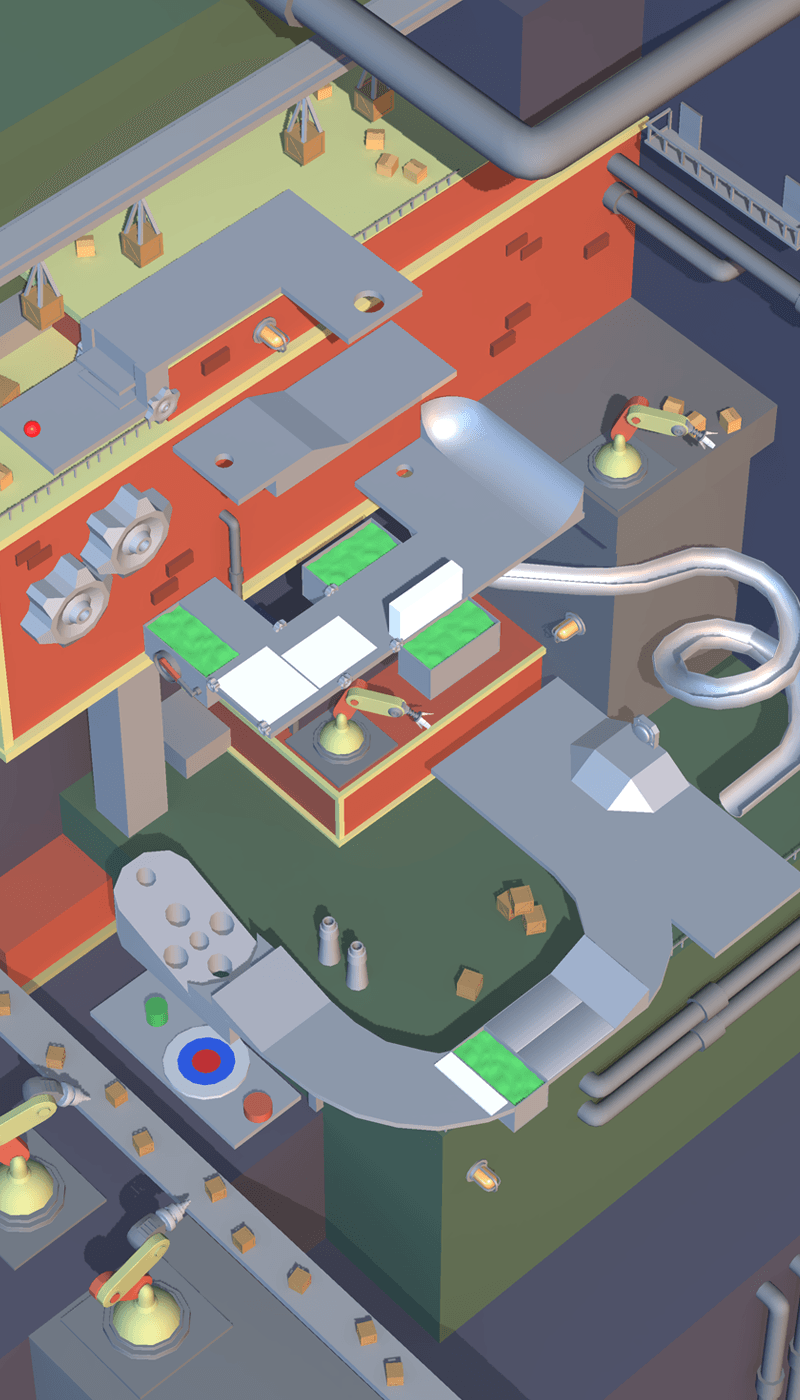
Almost complete...
It was tricky to strike the right balance between not being too easy making the game boring, but also not being so difficult nobody wanted to have another go. We needed that perfect level of frustration that was enjoyable but gave you that element of wanting to complete the level and try and get to the end if you died.
So despite having made a group decision on which obstacles we wanted on each tier there was a lot of toing and froing with the placement of obstacles and death zones. Needless to say this took much play testing from the whole team to identify the easy bits and where the struggle was too much.
Results
First off – we loved it! It was amazing to see something through from start to finish – concept to actual playable game. We worked really well as a team tapping into our collective skills and bolstering each other.
We were so proud to demo the finished game to the Corporation Pop team and thrilled at the reception we got. Our colleagues were hooked and loved playing it!
We created, from scratch, and in two weeks, an addictive mobile game with which had great artwork, was intuitive and playable, and which had the qualities needed to be scalable should we choose to take it to the next level.
So come on then, you’ve seen what we can do in a short space of time, imagine what we could do with full funding and time on our side. Give us a call and talk to us about the game you want us to design for you.

